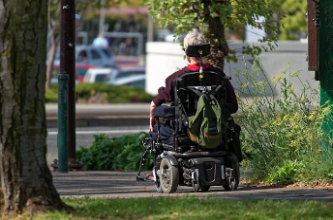In-Home Supportive Services (IHSS) Program

The In-Home Supportive Services (IHSS) program provides in-home assistance to eligible aged, blind, and disabled individuals as an alternative to out-of-home care and enables recipients to remain safely in their own homes.
Who is it For:
Eligibility criteria for all IHSS applicants and recipients:
- You must also be a California resident.
- You must have a Medi-Cal eligibility determination.
- You must live at home or an abode of your own choosing (acute care hospital, long-term care facilities, and licensed community care facilities are not considered "own home").
- You must submit a completed Health Care Certification form.
How the program works:
- A county social worker will interview you at your home to determine your eligibility and need for IHSS. Based on your ability to safely perform certain tasks for yourself, the social worker will assess the types of services you need and the number of hours the county will authorize for each of these services. This assessment will include information given by you and, if appropriate, by your family, friends, physician, or other licensed health care professional.
- A completed Health Care Certification (SOC 873) must be received by the county prior to authorization of services.
- You will be notified if IHSS has been approved or denied. If denied, you will be notified of the reason for the denial. If approved, you will be notified of the services and the number of hours per month which have been authorized for you.
- If you are approved for IHSS, you must hire someone (your individual provider) to perform the authorized services. You are considered your provider's employer and, therefore, it is your responsibility to hire, train, supervise, and fire this individual.
- If your county has contracted IHSS providers, you may choose to have services provided by the contractor.
- If your county has homemaker employees, you may receive services from a county homemaker.
- Understanding IHSS: This four-part video series is designed to provide introductory information about the IHSS program.
How are IHSS payments made?
You may contact the social worker assigned to your case to determine the IHSS hourly rate in your county. Because unions negotiate with the employer of record in each county, the wage rates may vary from county to county. The State issues all checks for individual provider payments. If the provider qualifies, the State withholds the applicable amounts for disability insurance and Social Security taxes.
Needs Assessments
IHSS assessments are completed during home visits at the initial intake assessment and annual reassessments. Recipients may request for a reassessment of need at any time if their needs or circumstances change. County social workers continuously monitor recipients’ cases and have frequent contact with recipients to ensure their needs are appropriately met through program services. IHSS social workers complete a needs assessment for each applicant or recipient using the following criteria: the Functional Index Rankings, the Annotated Assessment Criteria, and the Hourly Task Guidelines (HTGs).
Service Authorizations
Service authorizations are assessed during the needs assessment, which is a comprehensive review of the recipient’s medical history/diagnosis, medications/purpose, emergency contacts, physicians’ information, household composition, functional index rankings, mini-mental health assessment, necessary referrals to Adult Protective Services (APS), Child Protective Services (CPS), Fraud, community services, etc., language preferences and whether an interpreter is needed, and a full biopsychosocial assessment. The social worker needs to document all service needs and justify service authorizations in the case narrative.
How to Apply:
To apply for IHSS, complete an application and submit it to your county IHSS Office.
SOC 295 - Application For Social Services
Translations:
SOC 295 Armenian (pdf)
SOC 295 Chinese (pdf)
SOC 295 Spanish (pdf)